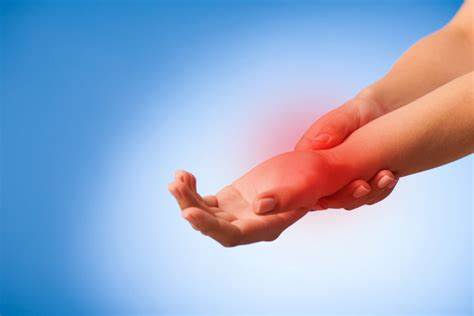Classification and Clinical Characteristics of Complex Regional Pain Syndrome (CRPS)
- Más allá del dolor

- Apr 11, 2021
- 2 min read

Complex regional pain syndrome has 2 forms:
1) CRPS 1 is a long-term (chronic) neurological disorder that most often occurs in the arms or legs after a minor injury.
2) CRPS 2 is caused by injury to the nerve.
CRPS is thought to be the result of damage to the nervous system. This includes the nerves that control blood vessels and sweat glands.
Damaged nerves can no longer adequately control blood flow, sensation (sensation), and temperature in the affected area. This leads to problems in:
Blood vesels
The bones
The muscles
The nerves
The skin
Then, we will know that we are in the presence of a CRPS Type 1 (Reflex Sympathetic Dystrophy) if:
Symptoms develop after a triggering harmful event, such as a trauma or burn, among others.
There is presence of spontaneous pain with or without allodynia.
The presence of moderate to severe edema is observed.
There is excessive sweating and hair.
There is no nerve injury.
We will know that we are in the presence of a Type II CRPS (Causalgia) if:
Symptoms and signs appear after a nerve injury.
Symptoms are not limited to the territory of the injured nerve.
Large amount of edema is evident.
Excessive sweating and hair is seen.
Stages of Complex Regional Pain Syndrome (CRPS) Type I
There are three stages to differentiate when we are in the presence of a Type I CRPS, they are:
Stage I:This is considered an acute and reversible phase with great vasodilation, a lot of pain (disproportionate to the severity of the injury), increased sweating and temperature, redness, rapid growth of nails and hair, in addition to the large amount of edema. If these symptoms are recognized early, early intervention will prevent the progression of the syndrome. This stage is estimated to last between three weeks and six months.
Stage II:It is also called vasoconstriction (ischemic) or dystrophic, it lasts from three to six months due to the presence of hyperactivity of the sympathetic system (SS), with burning pain and hypersensitivity to cold. The skin appears mottled, with a low temperature and more hair, the nails look brittle and there are already signs of osteoporosis.
Stage III:it is also known as the atrophic stage. Here the pain varies in intensity constantly and there is the presence of severe osteoporosis, muscle atrophy, contractures, and restriction in joint mobility. This stage can last for months or years, but spontaneous recovery from severe symptoms usually occurs within 18 to 24 months.
Source: Fiosioonline, Medlineplus, Mayo Clinic







Comments